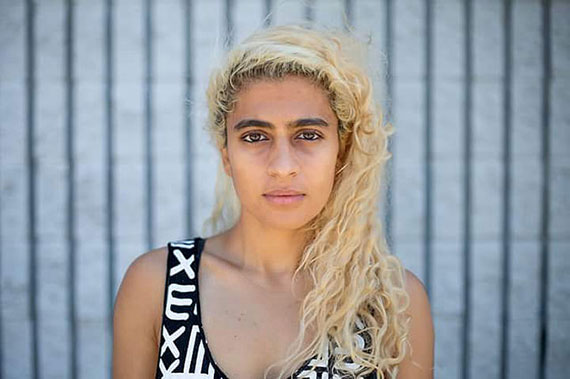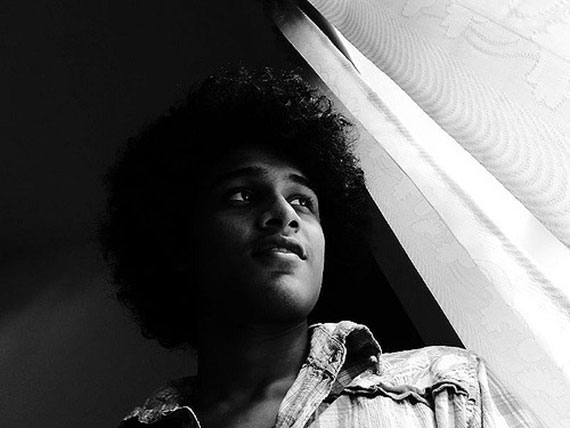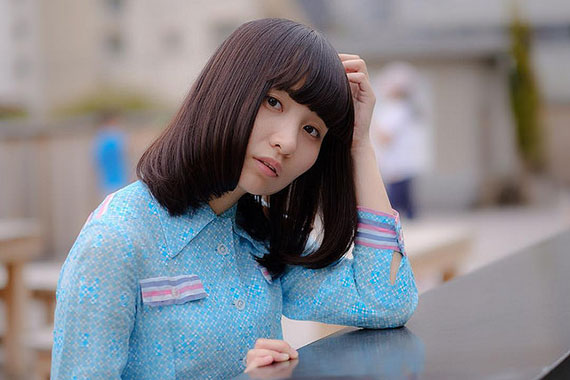In my opinion, the greatest medium for capturing a person’s character is through photography. It may seem odd to say a single shot can capture character while only capturing the moment, but done well, it will tell you more about the person than any other medium.

Photo by Dijon Bowden
Personality
Many tutorials start by advising you, the viewer, on which lens or camera you should use. While this may be important in some respects, it is by no means the number one factor in taking a good portrait. In fact, it is the photographer who takes the great image—not the camera. The most important practice to consider when capturing great portraits is to get to know your subject. Personality is what comes through in great portrait photography, not a camera or lighting (although these can help).
When preparing to for your portrait session, your initial steps should be in planning. What it is you want your image to capture? If your subject is a quirky, fun person then look to pose them in a style befitting of their manner. Use imagery to truly capture their personality. If they are serious, alter your style to suit. Capturing this essence is what will make the subject really think, “Wow!” There is no point trying to get a shy reserved person jumping all over the place or acting the loon; all you will achieve is an awkward picture that neither you nor your subject/client will be happy with.
Many of us remember how portraits used to all look the same: posed, smiling on mottled backgrounds. This is no longer the way in portrait photography. Pictures need to resemble the person’s essence more than how they look (if that makes sense).
When you know the personality traits of the person, then taking the photograph becomes a much easier prospect.
Location
The next step—location—will also help. There are two places you can take someone’s portrait: in a studio setup or in a natural environment. Now just to be clear, when I say studio setup, I mean equally in your plush all singing studio using fixed backdrops or in a makeshift studio in someone’s home. And by natural environment I don’t always mean outside (though if you do go outside you may get to use the greatest natural light we know)—someone positioned at work or watching TV is equally as natural as relaxing on a beach or perched in an archway. Natural to me means in the areas you would likely find them normally.
I find it is all about comfort and relaxation, if the person would be most at ease being photographed in a studio, then use one; if they would be more comfortable somewhere different then that is where you must go. Again we see personality come into play. For example, most parents I know would much rather have a stunning image of their kids playing in their local park than sitting in some stuffy studio, as this captures what children are about. That is what good portrait work is.
Lighting
With that established, you need to start considering lighting. There are, in their most basic form, three styles of lighting most people will use:
- low-key, where there are lots of dark colors and shadows (basically the emphasis is usually towards the darker colors in the image)
- high-key, where eliminating shadows (often with stark white backgrounds and vibrant colors) is more important
- medium tones, where most of the subject is clear but there are still high and low lights (this is my own term for it)
Whichever you choose of these will also aid in the style of the image. Usually low-key is down beat, high-key is upbeat, and normal will be in between. But this is your choice and, again, any decision should be made with the subject in mind.

Photo by MorkiRo
We know who we are going to be photographing and which style we will be shooting. Are we ready?
Posing
Not quite. As with all photography, it is personal choice that will dictate what happens next. Now is where you start to look at posing and composition (there are many books and websites to help with ideas for posing, so I will only give a few basic impressions I have found). For portraits, it is important to consider eye contact. Looking into the camera will give an impression of intimacy, while looking away from the camera (while facing the lens still) will give an impression of shyness. Looking into the distance will put emphasis on thought, or facing a second person will often imply affection or a bond.
It is well worth it at this point to look at other photographers’ images to see which sort of impression you want to show and see how that will work with your subjects.
Composition
Similar to posing, you will want to think about positioning in the frame. It doesn’t have to be the person in the center. In fact, it is often more impressive if there is space round the person. This gives a feeling of room for the subject (either to look into or move into, depending on whether it is only a head/shoulders portrait or a full body photograph). Thinking outside the box will often result in stunning photographs. There are far too many ideas to explain them all here, but think about these examples:
- a person looking up from the bottom of the image into an open space
- jumping while being photographed at an unusual angle
These will make your work stand out, but do remember it will only work if it suits the person’s personality (or you have an adaptable model).
Camera Settings
I don’t like to talk about specific settings often, as I feel that the photographer must experiment to find out what works in each situation. But another way to change your portraits would be to consider depth of field. Many tutorials talk about setting middle f-Stops (often around the f/11 mark) as these will have more of a person’s face in focus. And while this will work in many cases, doing things slightly away from the rules will again give your images something different. A very narrow depth of field can be used to highlight a single feature only, or increasing the depth so the background is in focus will again change the whole feel of the image. Experimentation here is key; find what you like.

Photo by KIMKIM981
Changing what you do to see what you find works for you and your subject will make more interesting imagery, but most importantly, make sure your subject is comfortable in what they are doing. It will become obvious in the final photograph if they were not happy.
About the Author:
Ashley Beolens (fatphotographer net) is the director and major contributor to the global photographic web resource.
Go to full article: How to Take Great Portraits
What are your thoughts on this article? Join the discussion on Facebook
PictureCorrect subscribers can also learn more today with our #1 bestseller: The Photography Tutorial eBook
The post How to Take Great Portraits appeared first on PictureCorrect.
from PictureCorrect https://ift.tt/327zMQr
via IFTTT






0 kommenttia:
Lähetä kommentti